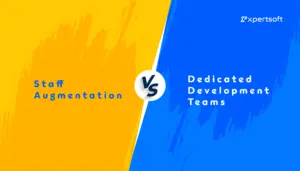Welcome to the ultimate Android development guide for 2024. As the Android app landscape continues to expand with millions of apps already on Google Play and countless more in development, creating functional, user-friendly, and innovative apps has never been more crucial. Whether you’re a startup crafting your first app, a business aiming to engage a broader audience, or a developer looking to refine your Android expertise, this guide provides everything you need. We’ll dive into essential tools, frameworks, best practices, and trends to help you build high-performing, scalable apps that stand out in today’s competitive market.
The State of Android App Development in 2024
In 2024, Android remains the dominant mobile operating system globally, powering more than 72% of smartphones. With a growing number of Android devices—ranging from budget phones to premium models—Android app developers must cater to a diverse and global audience. This presents unique opportunities and challenges for developers, as they need to ensure their apps are compatible across different device types, screen sizes, and hardware configurations.
📊 Key Statistics for 2024:
- Global Market Share: Android holds over 72% of the global mobile OS market share (StatCounter, 2024).
- App Store Revenue: Google Play Store generated $58 billion in revenue in 2023, and this number is expected to grow by 20% in 2024 (App Annie, 2023).
- App Downloads: Over 111 billion apps were downloaded from the Google Play Store in 2023, with gaming, entertainment, and utility apps leading the way (Sensor Tower, 2024).
As user expectations for seamless, feature-rich mobile experiences continue to rise, developers must focus on creating apps that deliver high performance, security, and usability. This guide will provide the tools and strategies needed to thrive in this competitive landscape.
2. Essential Tools for Android App Development
Building Android apps requires a combination of powerful development environments, code editors, testing tools, and device emulators. Here are the key tools every Android developer should be familiar with in 2024:

Android Studio
As Google’s official integrated development environment (IDE) for Android, Android Studio is an essential tool for any developer. It offers a range of features, including code editing, debugging, performance testing, and built-in support for Gradle-based builds.
📍 Key features of Android Studio:
- Intelligent code editor: Offers real-time suggestions and refactoring options.
- Layout editor: A drag-and-drop feature for designing UIs.
- Emulator: Allows developers to test apps on various Android device configurations.

Kotlin Playground
Kotlin has now firmly established itself as the preferred language for Android development, replacing Java in many new projects. Kotlin Playground allows developers to experiment with Kotlin code snippets in real-time, making it a valuable tool for both beginners and experienced developers.

Firebase
Google’s Firebase platform is a popular tool for integrating backend services like real-time databases, authentication, cloud storage, and push notifications. It simplifies app development by offering scalable, serverless architecture for Android apps.
3. Choosing the Best Programming Language for Android
In 2024, Android developers primarily use two programming languages: Kotlin and Java. Each has its own strengths and limitations, but Kotlin is quickly becoming the go-to language for modern Android development.
Kotlin: The Preferred Choice
Since Google officially endorsed Kotlin in 2017, it has rapidly grown in popularity. Kotlin is designed to be more concise, safe, and interoperable with Java, which allows developers to write fewer lines of code while reducing the likelihood of errors.
- Conciseness: Kotlin reduces boilerplate code, making development faster.
- Null Safety: Kotlin’s built-in null safety reduces the chances of null pointer exceptions.
- Interoperability: Developers can seamlessly mix Java and Kotlin code in the same project.
Java: Still Relevant in 2024
While Kotlin is often preferred for new projects, Java continues to be widely used, especially in legacy Android applications. Java’s vast ecosystem, extensive documentation, and community support make it a reliable choice, particularly for large-scale projects.
For further insights read the article Kotlin vs Java
4. Android App Design: Best Practices in UI/UX
In 2024, designing an Android app goes beyond aesthetics—it’s about creating a seamless and intuitive experience for users. Google’s Material Design 3 is the latest iteration of its design system, offering a set of guidelines that developers can follow to ensure their apps look and feel consistent with the broader Android ecosystem.
Key UI/UX Considerations:
- Consistency: Follow Material Design guidelines to ensure consistency across devices and platforms.
- Responsiveness: Ensure your app adapts to different screen sizes, from smartphones to tablets and foldables.
- Accessibility: Design for all users, including those with disabilities. Google provides tools like TalkBack and Accessibility Scanner to ensure your app is accessible.
- User Feedback: Incorporate visual and haptic feedback to make interactions more intuitive for users.
With foldable phones gaining popularity, developers must also consider adaptive layouts to provide optimal experiences on varying screen sizes and orientations.
5. Top Android Frameworks and Libraries
To streamline development and improve productivity, developers often rely on frameworks and libraries. These tools help reduce development time and ensure best practices are followed.

Jetpack Compose
Google’s Jetpack Compose is the modern toolkit for building native UIs in Android, replacing XML-based layouts. With Compose, developers can create dynamic, reactive UIs more easily, thanks to a declarative approach.
Key benefits of Jetpack Compose:
- Declarative syntax: Simplifies UI creation and management.
- Interoperability with existing views: Compose can integrate with traditional Android views.
- Less code: Reduces boilerplate code, improving readability and maintainability.

Retrofit
Retrofit is a popular HTTP client for Android that simplifies network requests and API integration. It’s widely used for apps that need to communicate with web services and retrieve data.

Room
Room is an abstraction layer over SQLite, making it easier to manage database operations. It ensures better performance and provides compile-time validation of SQL queries.
6. Performance Optimization Techniques
In 2024, user expectations around app performance are higher than ever. To meet these demands, Android developers need to focus on optimizing their apps for speed, responsiveness, and battery efficiency.
Key Performance Optimization Techniques:
- Lazy Loading: Load resources only when they are needed, reducing startup time and memory usage.
- Background Threading: Offload intensive tasks like network requests and database queries to background threads to prevent UI lag.
- Battery Optimization: Use tools like Android Profiler to identify parts of your app that consume excessive power and optimize them for better energy efficiency.
- App Bundles: Adopt Android App Bundles to reduce the size of APKs, leading to faster downloads and installations.
7. Integration of AI and Machine Learning in Android Apps
Artificial intelligence and machine learning have become integral parts of modern Android apps, enabling more personalized and intelligent user experiences. In 2024, tools like TensorFlow Lite and ML Kit make it easier than ever to integrate machine learning models directly into your Android app.
Key AI/ML Use Cases in Android:
- Personalization: Recommending content or products based on user behavior and preferences.
- Image Recognition: Using machine learning models to detect and identify objects in photos.
- Natural Language Processing (NLP): Enhancing chatbots, voice assistants, and other communication-based apps.
With Google’s ML Kit, developers can leverage pre-built models for image labeling, barcode scanning, text recognition, and more, reducing the complexity of implementing AI-driven features.
8. Testing, Debugging, and Deployment
Testing and debugging are critical to delivering a bug-free, high-quality app. Android Studio offers a wide range of tools for both manual and automated testing.
Testing Types:
- Unit Testing: Tests individual components, such as functions and methods.
- UI Testing: Ensures the app’s user interface behaves as expected across different devices and screen sizes.
- Integration Testing: Tests how different modules of the app interact with each other.
Debugging Tools:
- Logcat: A real-time logging tool that helps developers debug issues in the app.
- Firebase Test Lab: Allows developers to test their apps on various real devices hosted in the cloud.
Once your app has passed all testing phases, it’s time to deploy. Google Play’s App Bundle format optimizes the app for different devices, minimizing download sizes and improving the installation experience.
9. Google Play Store Optimization (ASO)
Just like SEO for websites, App Store Optimization (ASO) is crucial for improving the visibility and discoverability of your app on the Google Play Store. In 2024, competition in the Play Store is fierce, and optimizing your app’s metadata can significantly impact your app’s success.
Key ASO Techniques:
- Keyword Optimization: Research relevant keywords and incorporate them into your app’s title, description, and tags.
- High-Quality Screenshots and Videos: Provide clear, compelling visuals that showcase your app’s functionality and features.
- User Reviews and Ratings: Encourage users to leave positive reviews. Apps with higher ratings tend to rank better.
- Localized Content: Translate your app’s content for different markets to reach a broader audience.
10. Future Trends in Android App Development
As we look ahead into 2024, several emerging trends are shaping the future of Android app development. Keeping up with these trends will ensure your app remains competitive and meets evolving user expectations.
5G Integration
With the widespread rollout of 5G networks, Android apps can now leverage faster download speeds and lower latency. This opens up new possibilities for augmented reality (AR), virtual reality (VR), and real-time streaming apps.
Blockchain and Decentralized Apps (dApps)
Blockchain technology is increasingly being used in Android apps, particularly in industries like finance and gaming. Decentralized apps (dApps) are becoming more popular as they offer better security and privacy for users.
Wearable and IoT Integration
Android apps are not limited to smartphones. With the rise of wearables and Internet of Things (IoT) devices, developers must ensure their apps can communicate with a broader range of devices, from smartwatches to home automation systems.
Conclusion
As we can see in this Android development Guide, 2024 offers a wealth of opportunities for Android app developers, with exciting advancements in tools, frameworks, and technologies. Whether you’re building your first app or refining an existing one, understanding the latest best practices in Android development will be key to your success. From Kotlin and Jetpack Compose to AI integration and 5G, the future of Android app development is bright and full of potential.
If you’re ready to start your Android app development journey or need help with your current project, contact us for expert guidance and support. Let’s build something incredible together!



